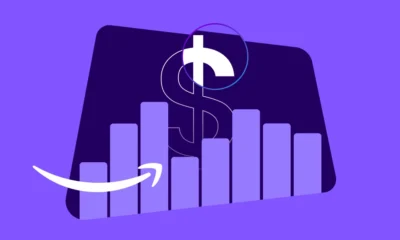PPC
Competitor Landing Page Analysis, Do’s and Don’ts
Competition is a necessary evil in the business world. If you’re not constantly watching what your competitors are doing, you can quickly find yourself out of luck. This is why competitor analysis is such a critical part of an effective PPC campaign. By understanding your competition’s strategy, you can better optimize your own campaign and avoid costly mistakes. This blog post will give you some tips for conducting an effective competitor landing page analysis to see what’s working and what’s not in your niche.
The goal of analyzing your competitors’ landing pages
When you’re analyzing your competitors’ landing pages, you’re looking for clues about what’s working well for them and what’s not. You may find that they’re using specific keywords or phrases that you’re not or that they have a stronger CTA than you do. You’ll be able to see if using a different tech stack correlates to conversions, CTR, or any other performance metric. In short, by understanding what’s working for them, you can adapt your own strategy to compete more effectively.
The above is particularly important when both you and your competition offer very similar products or services. For example, if you’re running a PPC campaign for a brick-and-mortar bank, it’s likely that you’ll need a strong CTA to drive potential leads away from more modern online banks. Taking a look at what’s working for your biggest competitors can serve as inspiration.
On the other hand, landing page analysis can also help you find areas where your competitors fall short. Maybe their pages are cluttered, or the copy is difficult to read. Maybe they’re not using any images on their pages, or their color scheme is off. Identifying these weaknesses can help you focus your own efforts and improve your conversion rates.
As you can tell by now, there are many things you’ll need to consider when analyzing your competitors’ landing pages. This can sometimes feel overwhelming, even for some experienced PPC marketers. This is why, below, you’ll find six useful and actionable tips that will help you focus on what’s important.
1.) Don’t just copy your competitors.
The first thing to understand about competitor landing pages is that you should avoid the temptation to copy them upfront. This should go without saying, but it never hurts to remember that cutting corners rarely pays off in the long run.
However, there is a stronger reason to avoid being a copycat. Even though copying a strategy point by point may help increase your performance at first, it doesn’t help you stand out from your competitors in the long run.
Remember that differentiating yourself from the competition is one of the keys to successful marketing in general, and that applies to PPC marketing as well.
The idea is to learn from your competition, avoid their mistakes and think of ways to improve on what they do well. If you see something awesome on their landing pages, think of how you can make it even more awesome. That’s the mindset you need when you approach landing page analysis or any form of competitor analysis for that matter.
2.) Use Google Ads’ auction report to make a quick list of competitors and their landing pages.
The Auction report in Google Ads is a great resource for quickly getting an overview of your competitors’ landing pages. This report shows you the ads competing for each of your keywords and the URLs of the corresponding landing pages.
This report is especially useful when you’re doing a preliminary analysis and want to get a general overview of what your competitors are doing. It’s also useful for identifying new competitors you may not have been aware of before.
To access the report, follow these steps:
- Sign in to your Google Ads account.
- Click on the ad keyword, active ad campaign, or ad group for which you want to find competitors.
- Click on the “Auction Insight” tab.
- Analyze the auction report.
With the information in this report, you’ll be able to:
- Check your competitor’s domains to see if they spend their ad budget on the same keywords as you.
- Take a look at what position your ad is usually placed on.
- See how frequently your ads are being shown compared to the competition.
3.) Take advantage of Facebook’s Page Transparency feature.
Facebook created its Page Transparency feature in response to the Russian interference in the 2016 U.S. Presidential election. The goal was to help Facebook users make more informed decisions when voting by showing how much money political organizations and candidates spend on Facebook Ads. Consequently, it’s a great tool to find out how much your competitors are spending on Facebook Ads and the level of engagement of their audience.
The best thing is how easy it is to access this information since it’s all in your competitor’s Ad Library. To get there, all you have to do is:
- Log into your Facebook account.
- Go to your competitor’s Facebook Business page
- Navigate to the “Page Transparency” tab and click on “See All.”
- Scroll down on the pop-up to the “Ads from this Page” section to see if the page is running ads.
- If it is, click on the “Go To Ad Library” button.
Once you’re in the Ad Library, you’ll find all sorts of great information, including:
- All the Facebook ads run by that company on their Facebook business page;
- How long they have been running each campaign;
- The copy of the ad and its description;
- The landing page URL is what’s most relevant for this post.
4.) Don’t click on the ad – use a spying tool to view competing landing pages instead.
An important tip to keep in mind is to avoid clicking on your competitors’ ads’ CTA once you find them. The reason is simple: even though the effect may be negligible if that ad generates a ton of traffic, you don’t want to give your competitor’s ad a boost in CTR by clicking on it every time you want to take a look at their landing page.
While finding the actual landing page URL can sometimes be tricky without clicking on it, you can use some paid espionage tools to avoid this issue. One example is iSpionage, but there are others available.
5.) Know what to look for in your competitor’s landing pages
Understanding how your rivals’ landing pages perform might assist you in creating better, more effective landing pages based on their experience. Some key pieces of information to look for are
Where is the traffic to their landing page coming from?
Is it coming from SEO ranking, is it coming from ad campaigns, social media, etc.
What are they showing on their landing pages?
Analyze each landing page for information like the type of design they use and the overall style. Ask yourself what colors are more dominant. How are those colors related to the brand? Would a similar color scheme work for your landing page?
Also, see what their main offer is. Can you offer something better? If they offer guarantees, can you offer more guarantees?
Analyze landing page performance
It’s important to research performance metrics like how many page views their landing pages get, their bounce rate, CTR, etc.; anything that can help you assess how effective your competitors’ landing pages are.
Analyze what technology stack they used
This is one more aspect of your competition you want to consider analyzing. Knowing whether your competition uses DoubleClick.Net, Adsense, or Facebook Custom Audiences and comparing that with what you’re using could provide insight into what’s making a difference in their marketing efforts.
What CMS they’re using is also relevant for landing pages, as well as what multimedia technologies they’re implementing. You could even find out what payment methods they offer their customers to see if you’re falling behind in terms of the adoption of new technologies like crypto.
While all this may sound like hard-to-find information, you won’t have to look for it yourself since several tools like BuiltWith will get the job done.
6.) Look for and analyze A/B Tests
You can easily learn from the results of your competitors’ A/B tests on landing pages and ad copy if you have a complete list of their ads and landing pages. This can be a huge time saver for your PPC marketing efforts.
For example, suppose you’re building a landing page for a certain keyword. You do your research and find that a competitor already A/B tested landing pages for the same keyword. By analyzing which landing page was most effective for them (after following the previous tip on both landing pages), you can use the results to craft your own landing page.
The bottom line
Landing page analysis is an important part of any PPC marketing campaign, but it can be difficult to know where to start. Using the auction report in Google Ads and Facebook’s Page Transparency feature can help give you a comprehensive list of your competitors and their landing pages. Additionally, by looking at your competitors’ A/B tests, analyzing their copy, assets, and technology, you can get a good idea of what strategies are working for them and how you might improve on their tactics. Once you have this information, it’s time to start analyzing it and turning it into unique, highly-converting landing pages of your own.

















You must be logged in to post a comment Login